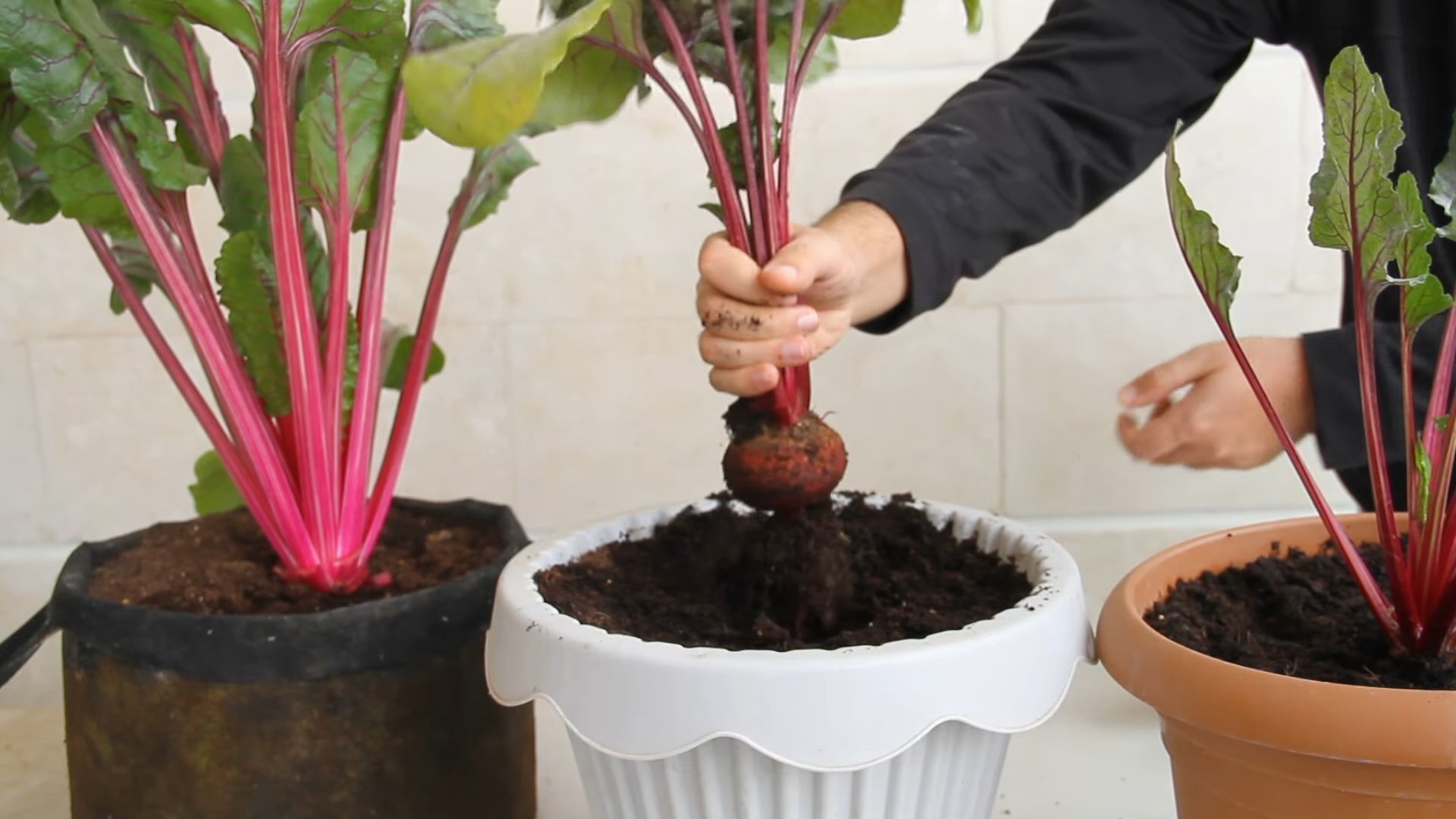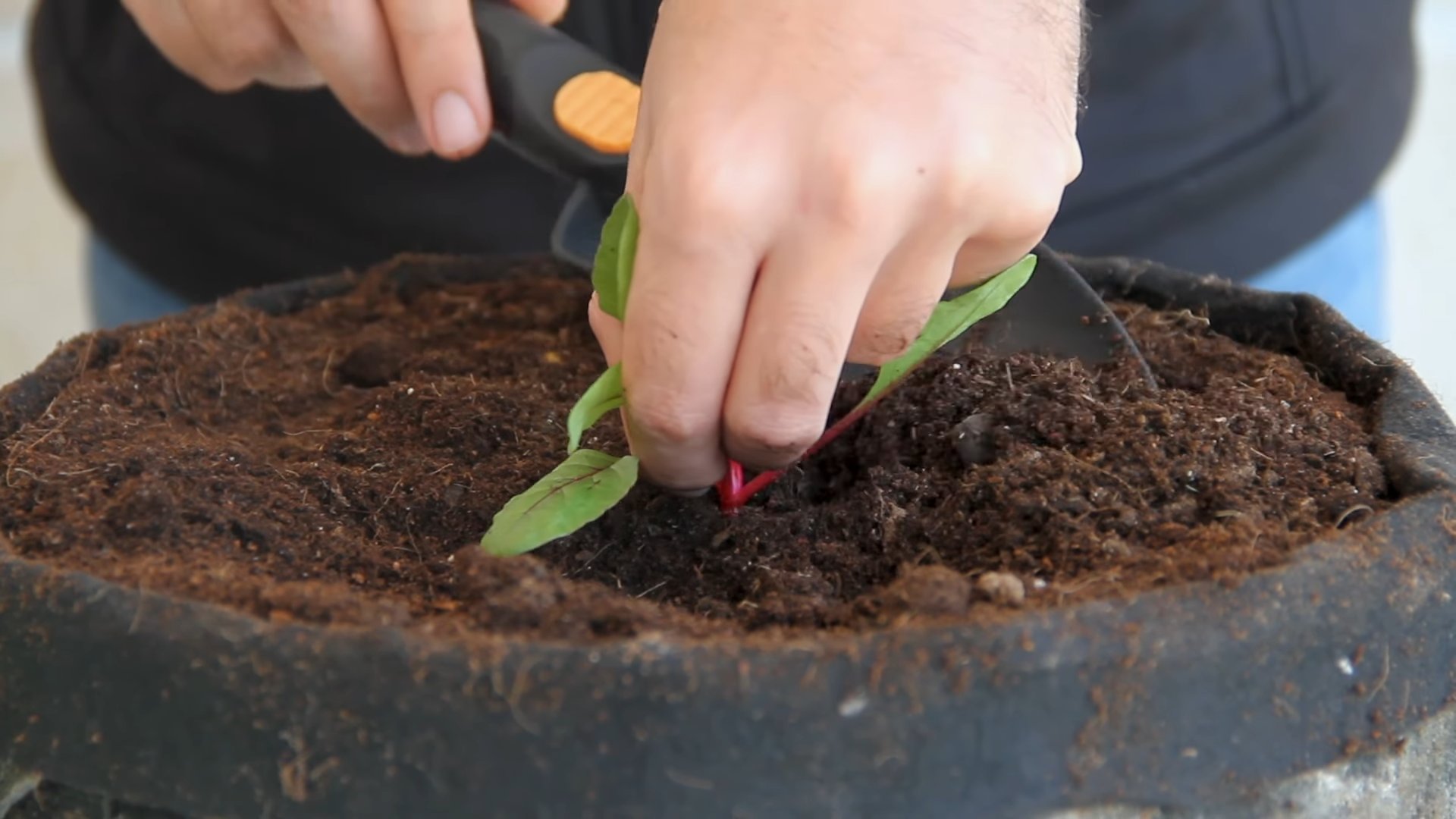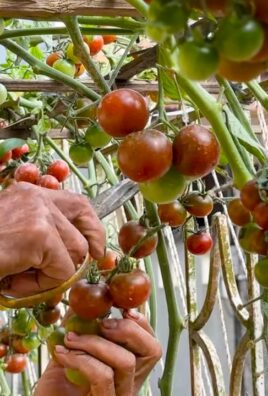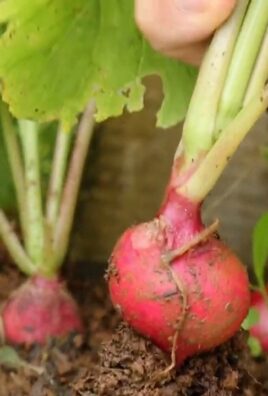Grow Beets Indoors? Absolutely! Imagine fresh, earthy beets gracing your plate, even when the snow is falling outside. Forget those bland, store-bought beets; we’re talking vibrant, homegrown goodness right from your windowsill! For centuries, root vegetables like beets have been a staple in diets across the globe, prized for their nutritional value and versatility. From ancient Roman gardens to humble cottage plots, beets have nourished generations.
But let’s face it, not everyone has a sprawling garden. That’s where this DIY guide comes in. I’m going to show you how to grow beets indoors, regardless of your space or experience. Whether you’re a seasoned gardener or a complete newbie, these simple tricks and hacks will have you harvesting delicious beets in no time. Think of it as bringing a little piece of the farm right into your home.
Why bother growing beets indoors? Well, besides the obvious benefit of fresh, organic produce, it’s also incredibly rewarding. There’s something truly special about nurturing a plant from seed to harvest. Plus, it’s a fantastic way to add a pop of color and life to your indoor space, especially during those dreary winter months. So, grab your pots, soil, and beet seeds, and let’s get started on this exciting indoor gardening adventure!

Growing Beets Indoors: A Beginner’s Guide
Okay, so you want to grow beets indoors? Awesome! I’m here to tell you it’s totally doable, and honestly, pretty rewarding. Fresh, homegrown beets, even if they’re grown inside, are just so much tastier than anything you’ll find at the grocery store. Plus, it’s a fun project, especially during those colder months when you’re craving a little bit of green in your life. Let’s dive in!
What You’ll Need
Before we get started, let’s gather all the supplies. Having everything ready beforehand will make the whole process smoother and less stressful. Trust me, I’ve learned that the hard way!
* Beet Seeds: Obviously! Choose a variety that’s known to do well in containers. ‘Early Wonder’ and ‘Detroit Dark Red’ are popular choices. I personally love ‘Detroit Dark Red’ because they’re reliable and have a great flavor.
* Containers: You’ll need pots that are at least 8-10 inches deep and wide. Beets need room to grow their roots. I prefer using fabric pots because they allow for better drainage and air circulation, but plastic or terracotta pots will work too. Just make sure they have drainage holes!
* Potting Mix: Don’t use garden soil! It’s too heavy and compacts easily, which isn’t good for root vegetables. Use a high-quality, well-draining potting mix. I usually mix my own using equal parts peat moss, perlite, and compost.
* Grow Lights: This is crucial if you don’t have a super sunny window. Beets need at least 6 hours of direct sunlight per day, and most indoor spaces just don’t provide that. A simple LED grow light will do the trick.
* Watering Can or Spray Bottle: For watering, of course!
* Fertilizer: A balanced liquid fertilizer (like 10-10-10) will help your beets thrive.
* Optional: Seed starting tray, heat mat (for faster germination), and a small trowel.
Planting Your Beet Seeds
This is where the magic begins! Getting the planting right is essential for a successful beet harvest.
1. Prepare Your Containers: Fill your containers with the potting mix, leaving about an inch of space at the top. Gently pat down the soil.
2. Sow the Seeds: Beet seeds are actually clusters of seeds, so you’ll likely get multiple seedlings from each “seed.” Sow the seeds about 1 inch deep and 2-3 inches apart. If you’re using a large container, you can plant more seeds, just make sure to thin them out later.
3. Water Gently: Water the soil thoroughly but gently, so you don’t disturb the seeds. You want the soil to be moist, but not soggy.
4. Provide Warmth: Beets germinate best in temperatures between 60-70°F (15-21°C). If your home is cooler than that, consider using a heat mat to speed up germination.
5. Cover (Optional): You can cover the containers with plastic wrap or a humidity dome to help retain moisture. Just make sure to remove the cover once the seedlings emerge.
Caring for Your Indoor Beets
Now that your seeds are planted, it’s time to nurture them and watch them grow! This involves proper watering, lighting, and fertilization.
1. Watering: Keep the soil consistently moist, but not waterlogged. Check the soil moisture regularly by sticking your finger about an inch into the soil. If it feels dry, it’s time to water. Water deeply, allowing the excess water to drain out of the drainage holes.
2. Lighting: As I mentioned earlier, beets need at least 6 hours of direct sunlight per day. If you don’t have a sunny window, use a grow light. Position the grow light a few inches above the seedlings and keep it on for 12-16 hours per day.
3. Thinning: Once the seedlings have a few sets of true leaves (the leaves that look like miniature beet leaves), it’s time to thin them out. This is important because each beet “seed” can produce multiple seedlings. Thin the seedlings so that they are about 2-3 inches apart. Gently pull out the weaker seedlings, being careful not to disturb the roots of the remaining ones. Don’t throw away the thinned seedlings! You can eat them as microgreens.
4. Fertilizing: Start fertilizing your beets about 2-3 weeks after they germinate. Use a balanced liquid fertilizer, diluted to half strength. Fertilize every 2-3 weeks.
5. Temperature: Beets prefer cooler temperatures, around 60-70°F (15-21°C). Avoid placing them near heat sources, like radiators or vents.
6. Humidity: Beets don’t need high humidity, but they do appreciate a little bit of moisture in the air. You can increase the humidity around your plants by placing a tray of water near them or using a humidifier.
7. Rotation: Rotate your containers regularly to ensure that all sides of the plants receive equal light.
Dealing with Pests and Diseases
Thankfully, indoor beets are less susceptible to pests and diseases than outdoor beets. However, it’s still important to be vigilant and take action if you notice any problems.
* Aphids: These tiny, sap-sucking insects can be a nuisance. If you see aphids on your beets, you can try washing them off with a strong stream of water or spraying them with insecticidal soap.
* Fungus Gnats: These small, annoying flies are attracted to moist soil. To prevent fungus gnats, avoid overwatering and allow the soil to dry out slightly between waterings. You can also use sticky traps to catch the adult gnats.
* Damping Off: This fungal disease can kill seedlings. To prevent damping off, use a sterile potting mix and avoid overwatering.
Harvesting Your Beets
The moment you’ve been waiting for! Knowing when to harvest is key to getting the best flavor and texture from your beets.
1. Timing: Beets are typically ready to harvest about 50-70 days after planting, depending on the variety.
2. Size: The size of the beet roots will vary depending on the variety, but generally, you can start harvesting when the roots are about 1-2 inches in diameter.
3. Check the Tops: The beet greens are also edible, so you can harvest them at any time. Just be sure to leave at least a few leaves on the plant so it can continue to grow.
4. Harvesting: To harvest your beets, gently loosen the soil around the roots with a trowel. Then, carefully pull the beets out of the soil.
5. Storage: After harvesting, remove the beet greens, leaving about an inch of stem attached to the roots. Store the beets in the refrigerator in a plastic bag. They should last for several weeks. The beet greens can also be stored in the refrigerator in a plastic bag, but they will only last for a few days.
Enjoying Your Homegrown Beets
Now for the best part – eating your delicious, homegrown beets! There are so many ways to enjoy them.
* Roasted: Roasting beets brings out their natural sweetness. Simply toss them with olive oil, salt, and pepper, and roast them in the oven at 400°F (200°C) for about 45 minutes, or until they are tender.
* Boiled: Boiling beets is another simple way to cook them. Just boil them in water until they are tender, about 30-45 minutes.
* Pickled: Pickled beets are a classic. They’re tangy, sweet, and delicious.
* Raw: You can also eat beets raw. Grate them into salads or use them to make beet juice.
* Beet Greens: Don’t forget about the beet greens! They can be cooked like spinach or kale. Sauté them with garlic and olive oil, or add them to soups and stews.
Troubleshooting
Even with the best planning, sometimes things don’t go exactly as expected. Here are a few common problems you might encounter and how to fix them:
* Poor Germination: If your beet seeds aren’t germinating, it could be due to several factors. Make sure the soil is moist, not waterlogged. The temperature might be too cold. Try using a heat mat to warm the soil. The seeds might also be old or of poor quality. Try using fresh seeds from a reputable source.
* Leggy Seedlings: If your seedlings are tall and spindly, they’re not getting enough light. Move them closer to the grow light or provide more natural sunlight.
* Slow

Conclusion
So, there you have it! Growing beets indoors is not only possible, but it’s also a surprisingly rewarding experience. Forget relying solely on grocery store produce, especially when you crave that fresh, earthy sweetness only homegrown beets can provide. This DIY method empowers you to cultivate your own vibrant, nutritious beets right in the comfort of your home, regardless of the season or your outdoor space limitations.
Why is this a must-try? Because it puts you in control. You dictate the growing conditions, ensuring your beets are free from unwanted pesticides and herbicides. You get to witness the entire life cycle of the plant, from tiny seed to plump, ruby-red root. And, most importantly, you get to enjoy the unparalleled flavor of freshly harvested, homegrown beets.
But the beauty of this indoor gardening adventure lies in its adaptability. Feel free to experiment with different beet varieties. Consider trying golden beets for a milder flavor and vibrant color, or Chioggia beets with their beautiful candy-striped interiors. You can also adjust the container size based on the space you have available. Smaller containers are perfect for growing beet greens, while larger containers will allow the roots to develop more fully.
Don’t be afraid to get creative with your lighting setup. While a sunny windowsill works wonders, supplementing with grow lights can significantly boost your yield, especially during the darker winter months. And remember, consistent watering and proper drainage are key to success.
We wholeheartedly encourage you to give this DIY trick a try. It’s a fantastic way to connect with nature, learn new skills, and enjoy the delicious rewards of your labor. Once you’ve harvested your first batch of homegrown beets, we’d love to hear about your experience! Share your photos, tips, and any variations you’ve tried in the comments below. Let’s build a community of indoor beet growers and inspire others to embrace the joy of homegrown goodness. Embrace the power of growing beets indoors and taste the difference!
Frequently Asked Questions (FAQs)
Q: What are the best beet varieties to grow indoors?
A: While most beet varieties can be grown indoors, some tend to perform better than others. Smaller, faster-maturing varieties are generally recommended. ‘Early Wonder’, ‘Detroit Dark Red’, and ‘Baby Beet’ are excellent choices. ‘Golden Beet’ and ‘Chioggia’ are also popular for their unique colors and flavors. Experiment with different varieties to see which ones thrive best in your specific indoor environment. Consider the size of your container when selecting a variety, as larger beets will require more space.
Q: What kind of soil is best for growing beets indoors?
A: Beets prefer well-draining, fertile soil with a slightly acidic to neutral pH (around 6.0 to 7.0). A good potting mix specifically formulated for vegetables is ideal. You can also create your own mix by combining equal parts of potting soil, compost, and perlite or vermiculite. The compost provides essential nutrients, while the perlite or vermiculite improves drainage and aeration. Avoid using garden soil, as it can be too heavy and may contain pests or diseases.
Q: How much light do indoor beets need?
A: Beets need at least 6 hours of direct sunlight per day to thrive. A south-facing windowsill is often the best location. However, if you don’t have access to sufficient natural light, you can supplement with grow lights. Fluorescent or LED grow lights are effective and energy-efficient. Position the lights a few inches above the plants and keep them on for 12-16 hours per day. Rotate your beet plants regularly to ensure even light exposure on all sides.
Q: How often should I water my indoor beets?
A: Beets need consistent moisture to grow well, but avoid overwatering, which can lead to root rot. Water thoroughly when the top inch of soil feels dry to the touch. Check the soil moisture regularly, especially during hot or dry periods. Ensure that your containers have drainage holes to prevent water from accumulating at the bottom. Reduce watering frequency during cooler months or when the plants are not actively growing.
Q: How long does it take for beets to mature indoors?
A: The time it takes for beets to mature indoors depends on the variety and growing conditions. Generally, you can expect to harvest beet greens in about 30-40 days and beet roots in 50-70 days. Check the seed packet for specific maturity times for your chosen variety. You can harvest beet greens at any time, even while the roots are still developing. The roots are ready to harvest when they reach the desired size, typically 1-3 inches in diameter.
Q: Do I need to fertilize my indoor beets?
A: Yes, beets benefit from regular fertilization, especially when grown in containers. Use a balanced, water-soluble fertilizer specifically formulated for vegetables. Follow the instructions on the fertilizer package for application rates and frequency. Fertilize every 2-3 weeks during the growing season. Avoid over-fertilizing, as this can lead to excessive foliage growth at the expense of root development. You can also amend the soil with compost or worm castings to provide a slow-release source of nutrients.
Q: How do I prevent pests and diseases from affecting my indoor beets?
A: While indoor plants are generally less susceptible to pests and diseases than outdoor plants, it’s still important to take preventative measures. Inspect your plants regularly for signs of pests or diseases. Common pests that may affect beets include aphids, spider mites, and flea beetles. Treat infestations promptly with insecticidal soap or neem oil. Ensure good air circulation around your plants to prevent fungal diseases. Avoid overwatering, as this can create a favorable environment for disease development. Use sterile potting mix to prevent soilborne diseases.
Q: Can I grow beets indoors year-round?
A: Yes, you can grow beets indoors year-round, provided you have adequate light and temperature control. Beets prefer temperatures between 60-70°F (15-21°C). If your indoor temperatures fluctuate significantly, you may need to adjust your watering and fertilization schedule accordingly. Supplementing with grow lights is essential during the darker winter months to ensure sufficient light for healthy growth.
Q: What can I do with my homegrown beets?
A: The possibilities are endless! You can enjoy your homegrown beets in a variety of ways. Roast them for a sweet and earthy side dish, boil them and add them to salads, or pickle them for a tangy treat. Beet greens are also delicious and nutritious. Sauté them with garlic and olive oil, add them to soups or stews, or use them in salads. Don’t forget to save some of your beet greens for smoothies! The vibrant color and earthy flavor of beets make them a versatile ingredient in both sweet and savory dishes.





Leave a Comment